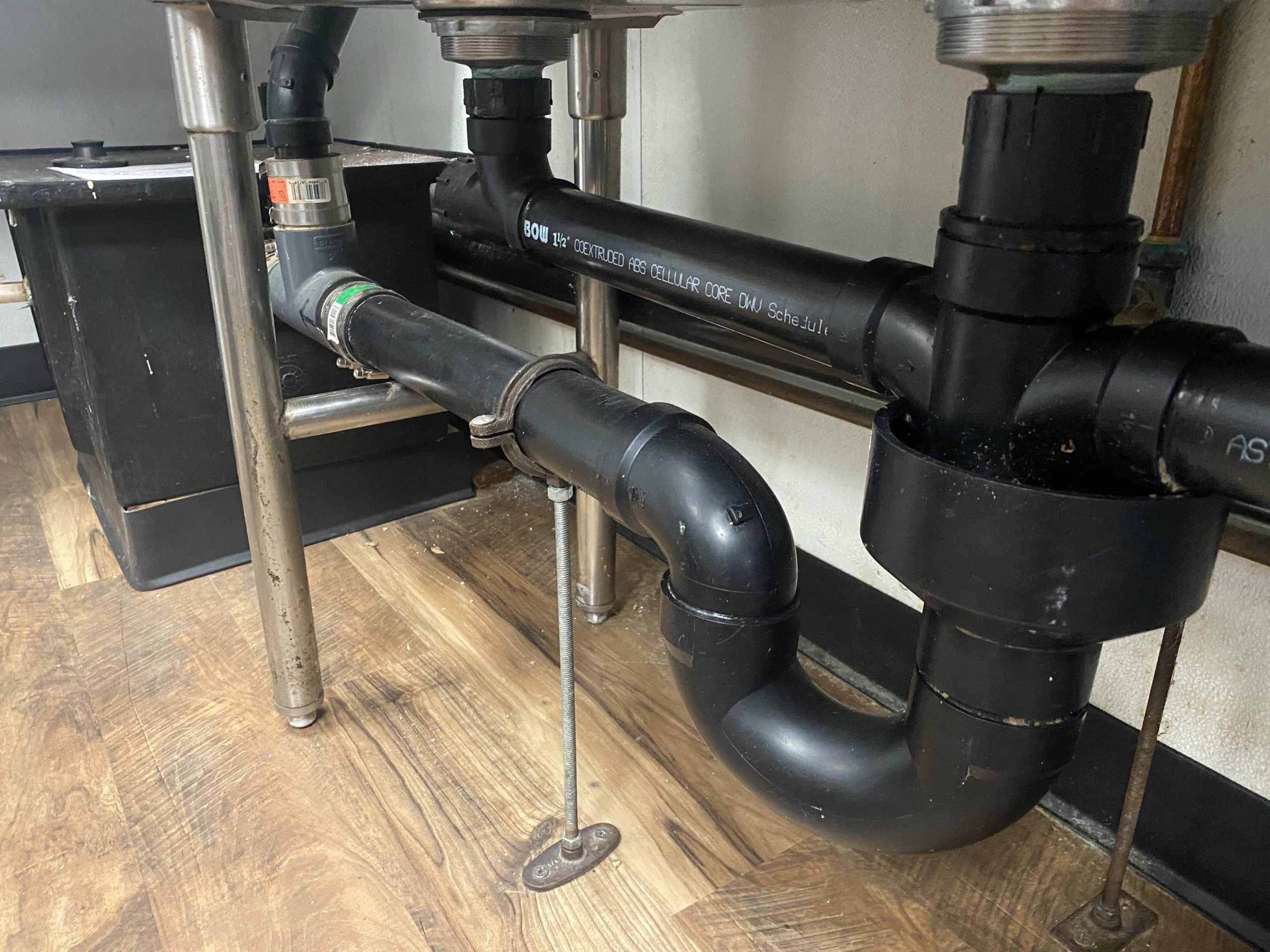A 3 compartment sink air gap drain is a vital part of a commercial kitchen’s plumbing system. It prevents cross-contamination by maintaining a physical gap between the sink and the sewer line, ensuring the proper drainage of wastewater.
In any commercial kitchen, the 3 compartment sink plays a crucial role in maintaining cleanliness and adhering to health codes. The air gap drain is a key component of this system, preventing the backflow of contaminated water into the sink and ensuring proper drainage.
Understanding the function and importance of the 3 compartment sink air gap drain is essential for ensuring a safe and hygienic kitchen environment. We will explore the purpose of a 3 compartment sink air gap drain, its installation requirements, and the benefits it offers to commercial kitchen operations.
Understanding 3 Compartment Sink Air Gap Drain
When setting up a 3-compartment sink, it is essential to understand the significance of the air gap drain in maintaining hygiene. The air gap serves as a crucial component in preventing contamination and ensuring the proper sanitation of dishes. By creating a physical break between the water supply and the sink, the air gap effectively minimizes the risk of backflow and cross-contamination, safeguarding against potential health hazards. This fundamental setup is vital for any commercial kitchen, as it adheres to sanitation regulations and promotes a safe and clean environment. Incorporating a 3-compartment sink with an air gap drain is a proactive measure to guarantee the highest standards of hygiene and food safety.
Functionality Of Air Gap Drains
Air Gap Drains in 3 compartment sinks serve a crucial role in preventing backflow and ensuring compliance with health codes. By creating a physical space between the water supply and the sink, air gaps prevent contaminated water from flowing back into the clean water supply. Compared to other backflow prevention methods, air gaps are highly effective and require minimal maintenance. However, proper installation and routine cleaning are essential to avoid common issues such as clogging or improper drainage. Regular inspections are necessary to ensure that air gap drains are functioning efficiently, safeguarding against potential health risks and regulatory violations.
Installing Your 3 Compartment Sink Air Gap Drain
Installing a 3 compartment sink air gap drain requires the following tools and materials: a drill, screwdriver, plumber’s putty, air gap kit, and PVC pipe. Step-by-step installation process: First, drill a hole in the sink for the air gap. Apply plumber’s putty around the hole, then insert the air gap base. Connect the air gap to the drain line with the PVC pipe. Lastly, test for leaks. Tips for ensuring a proper air gap fit: Ensure the air gap is at least 2 inches above the flood level of the sink. Use the manufacturer’s instructions as a guide for proper installation. Check for any local plumbing codes that may affect the installation.
Compliance And Regulations
The 3 Compartment Sink Air Gap Drain is an essential component for ensuring compliance with health code requirements in commercial kitchens. Businesses must adhere to strict regulations regarding sink and air gap functionality to avoid the potential negative impact of non-compliance. Failure to meet these regulations can result in fines, penalties, and even business closure. Navigating the local regulations for commercial kitchens can be complex, requiring thorough understanding and implementation of specific requirements. Proper installation and maintenance of the 3 Compartment Sink Air Gap Drain are crucial for ensuring that businesses meet the necessary health code standards and protect the health and safety of their customers.
Maintaining A Healthy Sink Environment
Maintaining a healthy sink environment is essential to ensure proper hygiene and functionality. Routine cleaning practices for the sink and air gap are crucial to prevent bacterial growth and blockages. Regularly cleaning and sanitizing the sink and air gap can help avoid potential issues. Signs of air gap drain malfunction include foul odors, slow draining, and backups. It’s important to identify and address these problems promptly to prevent further complications. Troubleshooting and repairing common problems, such as clogs and leaks, can help maintain the efficiency of the air gap drain. By staying proactive with maintenance and addressing issues promptly, a healthy sink environment can be effectively preserved.

Credit: www.reddit.com
Upgrades And Accessories
Upgrading your 3 compartment sink with air gap drain accessories can significantly improve its efficiency. By incorporating the right attachments, you can enhance the functionality of your sink, making it more practical and convenient for everyday use. Whether it’s optimizing drainage or maintaining hygiene, choosing the appropriate air gap accessories is crucial for maximizing the sink’s performance. Consider the potential benefits of an upgraded air gap system and how it aligns with your specific sink requirements. Tailoring the accessories to address your sink’s unique needs can result in a more effective and reliable setup. Take into account factors such as compatibility, durability, and ease of maintenance when selecting the accessories for your 3 compartment sink.
Frequently Asked Questions Of 3 Compartment Sink Air Gap Drain
What Is A 3 Compartment Sink?
A 3 compartment sink is a kitchen essential for washing, rinsing, and sanitizing dishes. It’s divided into three sections for these specific tasks, promoting hygiene and efficiency in food service establishments.
Why Is An Air Gap Important For The Sink Drain?
The air gap prevents wastewater from flowing back into the clean water supply. It acts as a barrier, ensuring that contaminated water does not mix with the potable water, thus safeguarding public health.
How Does The Air Gap Function?
The air gap creates a physical space between the sink drain and the wastewater disposal system. It allows air to enter the drain line, preventing backflow and ensuring a sanitary environment for dishwashing and food preparation.
What Are The Regulations For Using A 3 Compartment Sink Air Gap Drain?
According to health regulations, a 3 compartment sink must be equipped with an air gap drain to prevent cross-contamination. Compliance with these standards is crucial for maintaining a safe and sanitary food service operation.
Conclusion
A 3-compartment sink air gap drain is essential for maintaining a hygienic and compliant kitchen environment. It prevents backflow contamination and ensures the safety of your customers and staff. By investing in a high-quality air gap drain system, you can avoid costly health code violations and protect your business reputation.

